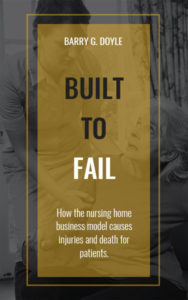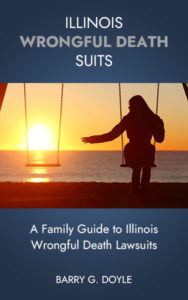The Illinois Department of Health has cited and fined Saint Anthony Rehabilitation & Nursing Center when staff failed to complete a skin assessment upon a resident’s admission, delayed wound care treatment for a week, and did not update the care plan as a pressure ulcer severely deteriorated. The resident, who entered the facility with a documented history of pressure ulcers, eventually had to be hospitalized with multiple severe pressure wounds, including a massive Stage IV sacral pressure ulcer that required surgical debridement and ultimately led to discussions about hospice care.
This case involves a 75-year-old male resident with multiple medical conditions including diabetes, coronary artery disease, hypertension, paraplegia, and a history of pressure wounds. The resident was transferred from an out-of-state Veterans Administration hospital to a skilled nursing facility before being admitted to Saint Anthony Rehabilitation & Nursing Center.
Medical records from the previous skilled nursing facility documented that the resident had a “small sheared area under scrotum and coccyx with shearing and multiple small open areas.” A wound evaluation at that facility described a sacral pressure wound with a “history of Stage IV sacral pressure wound/full thickness” that was now “scattered areas with minimal depth.” The wound was measured at 6cm x 6cm x 0.1cm with “80% granulation tissue” and “20% intact normal color skin.” The treatment plan ordered “Zinc ointment to affected area twice daily and as needed.”
When the resident was transferred to Saint Anthony, facility staff failed to follow their own policy regarding skin assessments. According to the facility’s “Pressure Ulcers/Skin Integrity/Wound Management” policy, “A head to toe skin assessment will be conducted by a licensed nurse. It is recommended that this assessment is completed within the shift that the resident was admitted; however, it must be completed within 24 hours of admission.” The policy also states that “For new admission/readmissions, an immediate plan of care will be developed to address the immediate interventions to preserve and/or treat skin integrity issues.”
Despite these requirements, no admission skin assessment was completed when the resident was admitted. The Director of Nursing later confirmed this failure, acknowledging that the first skin assessment wasn’t completed until the resident was seen by a Wound Physician over a week after admission.
Furthermore, while the resident arrived with physician orders for wound care (“Cleanse sacral area with soap and water and apply Zinc twice daily and as needed”), these orders were not initiated at the facility until over a week after admission. Treatment records indicate the resident received no wound treatment during this critical period.
When the Wound Physician finally evaluated the resident, the sacral pressure wound had dramatically worsened. It was now described as a “full thickness Stage IV” wound measuring 9.0cm x 8.5cm with “thick adherent black necrotic tissue (eschar): 100%.” The wound progress was documented as “Exacerbated due to unknown since admission to facility.” The treatment plan was changed to “Leptospermum Honey once daily” covered with foam silicone border.
Over the next few months, the resident’s wound continued to deteriorate despite surgical debridements. A follow-up evaluation described the wound as measuring 12.4cm x 10.1cm x 0.2cm with “thick adherent black necrotic tissue (eschar): 100%” and noted that the wound had “Exacerbated due to infection.” The treatment plan was updated to include antibiotics and instructions to “Off-load wound; reposition per facility protocol.”
The resident was eventually sent to the emergency department for low urine output. Hospital records describe the resident’s condition in stark terms: “Patient has a large sacral pressure ulcer, foul-smelling (pictures in the chart).” The hospital performed an “excisional debridement of sacral wound in preparation for flap closure.” A palliative care note from the hospital described “Massive wounds. stage IV pressure ulcer located on his sacrum, stage III pressure ulcer located on his scrotum and a stage III pressure ulcer located on his right ischium.” Discussions with the family included options ranging from transfer to a tertiary care center for grafting to “comfort care hospice care limited care.”
Throughout this deterioration, the resident’s care plan was never properly updated. The care plan initially noted “Alteration in skin integrity – location coccyx. Identified on admission” with interventions including “Refer to Nurse Practitioner as appropriate,” “Dietary consult as indicated,” and “Turn and reposition routinely. Document any refusal.” Despite the significant changes in the resident’s condition, including wound deterioration, surgical debridements, and infection, the care plan was “never reviewed, revised or updated” and “did not include any pressure relief equipment, changes in treatments or subsequent wound infection.”
The Nurse Practitioner later stated she “did not actually visualize the resident’s wound” and “had no idea it was that big.” She noted the resident was “very non-compliant with care and resistive to weight shifting, offloading” and was “verbally aggressive, cussing staff out.” The Nurse Practitioner acknowledged that the resident’s care plan should have included documentation of his non-compliance with wound care interventions.
The Wound Physician who had seen the resident before admission to Saint Anthony stated the resident “did not have eschar on his sacral wound” at that time and acknowledged that “Zinc is not an appropriate treatment for a wound with eschar.” She expressed doubt that “not having Zinc for a week would lead to a wound covered in 100% Eschar” but stated “the order for Zinc twice daily should have been carried over though or re-evaluated upon admission.”
One of our core beliefs is that nursing homes are built to fail due to the business model they follow and that unnecessary accidental injuries and wrongful deaths of nursing home residents are the inevitable result. Our experienced Chicago nursing home lawyers are ready to help you understand what happened, why, and what your rights are. Contact us to get the help you need.


